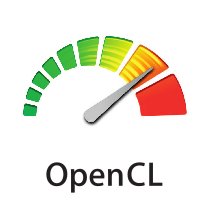Virtual Open Systems Newsletter
In this edition, Virtual Open Systems highlights some of its most recent development activities related to its mixed-criticality virtualization product software stack to strengthen its product offer for automotive, Edge & Cloud computing. In addition, the most recent news about the company dissemination are described, together with its latest research and innovation projects news and the leading activity in the AGL Automotive Grade Linux EG-Virt virtualization working group.
- Product release: VOSySmonitor v2.5.0 - ISO-26262 certified
- Mixed-critical virtualization: VOSySmcs, mixed-criticality graphic support
- Edge & Cloud Trusted Computing features: EdgeVIM OpenStack extensions
- Open Source automotive virtualization: Latest VOSyS AGL EG-VIRT activity
- Leading the innovation: Integration of cutting-edge cloud technologies
- Computation acceleration: OpenCL inside VMs and containers
Enabling mixed-criticality in Automotive, IoT edge node, Industry-4.0

Virtual Open Systems is glad to announce the new release v2.5.0 (ASIL-C - ISO 26262 certified) of its virtualization product dedicated to mixed-criticality automotive systems called VOSySmonitor. This technology enables the consolidation of several applications (e.g., Linux-KVM along with a Real-Time Operating System), with different safety levels on a single heterogeneous multi-cores platform. By leveraging on ARM TrustZone, VOSySmonitor provides a system-wide security approach that ensures the best freedom from interference for the safety critical partition than any conventional and commercial virtualization solution. VOSySmonitor has been developed as a Safety Element out of Context (SEooC) through the application of V cycle fully compliant with the ASIL-C requirements of the ISO 26262 standard. The integration of VOSySmonitor into a system developed according to the ISO 26262 is supported by a Qualification Kit. It includes a Safety Manual that describes how to use and integrate VOSySmonitor safely in the system as well as provides evidence of compliance with the ISO 26262 (ASIL-C) standard and a verification report of the development process, tool confidence analysis and test results.

VOSySmcs consists of a full fledged software stack to support a modern generation of car virtual cockpit where the In-Vehicle Infotainment (IVI) system and the Instrument Digital Cluster are consolidated and interact on a single platform. Indeed, traditional gauges and lamps are replaced by digital screens offering opportunities for new functions and interactivity. Vehicle information, entertainment, navigation, camera/video and device connectivity are being combined into displays. However, this different information does not have the same level of criticality and the consolidation of mixed-critical applications represent a real challenge. In this context, VOSySmcs includes a mixed-criticality graphic support that enables the integration of safety-critical and non-critical information on a single display, while providing rendering guarantees for the safety-critical output. In addition, VOSySmcs supports GPU virtualization in order to provide hardware acceleration capacity for the Virtual Machines running in the non-critical partition such as Linux, Android, etc.

Virtual Open Systems adds trusted computing extensions based on VOSySmonitor in NFV, Edge and Cloud Computing environments. The objective is to add virtualized Trusted Platform Module (TPM) functions to VNFs and enable remote attestation at the Virtualized Infrastructure Manager (VIMs) layer. After an extensive VIM solutions benchmark resulted in the scientific publication presented at the IEEE International Symposium on Broadband Multimedia Systems and Broadcasting 2018 (BMSB 2018), Virtual Open Systems selected Open Stack as reference solution for the development of specific Trusted Computing extensions called EdgeVIM. This technology is integrated in the H2020 5GCity architecture, as detailed in the guest blogpost Smart cities applications security and trust through edge computing virtualization.

Virtual Open Systems leads the worldwide open source efforts to bring virtualization in automotive through the Automotive Grade Linux (AGL) Virtualization Expert Group (EG-VIRT). During the last Automotive Linux Summit, held in Tokyo in June 2018, the Automotive Grade Linux EG-Virt software defined connected car white paper has been officially published. This document, edited by Virtual Open Systems with the support by the AGL community, presents the benefits of the virtualization in the automotive market and its use cases, requirements and solutions. The impact of this work on the automotive market and on the overall open source community has been disseminated in the guest blog post Automotive open source virtualization: Bringing open source virtualization in AGL published on the Embedded Computing Design website.

Expected to be completed by the end of 2018, the dReDBox H2020 research project is at the integration stage. Virtual Open Systems is an active participant of this effort, particularly with regards to QEMU-KVM virtualization layer enhancements, such as the dynamic VM memory resizing enabling runtime guest RAM regulation, the inter-VM memory sharing to allow multiple VMs, hosted on different compute nodes, to share disaggregated memory buffers that are not locally attached to the compute node. Furthermore, leveraging the physical disaggregation, VM migration becomes a very lightweight operation as moving guests between different compute nodes does not imply heavy copies of data, but remapping operations; such evolution brings a new grade of achievable server consolidation levels. At last, an example of disaggregated device will also be included in the final demonstrator, showcasing how the disaggregated memory can be used to disaggregate a block device.

As part of the ExaNoDe H2020 research project, Virtual Open Systems develops a software API remoting solution for OpenCL. OpenCL is an open standard maintained by the Khronos Group, used for offloading computation tasks into accelerators, such as GPUs and FPGAs. Software API remoting is a para-virtualization technique that allows accessing a host native library from the inside of a virtual machines. It operates by intercepting API function calls from the application in the guest system, and forwarding them to a helper process on the host through the use of shared memory pages. API remoting for containers can be achieved similarly, by replacing the host-to-VM communication layer (based on Virtio) with Linux inter-process communication mechanisms. To comply with the high performance requirements of OpenCL usage, it is important to reduce as much as possible the overhead of the API remoting layer. Hence, the work has focused on passing the data buffers (that may account for several gigabytes of memory) with zero copies, that to guest physical pages lookup and remapping.
- Newsletter 2013 09
- Newsletter 2014 03
- Newsletter 2014 09
- Newsletter 2015 03
- Newsletter 2016 03
- Newsletter 2015 09
- Newsletter 2017 09
- Newsletter 2016 09
- Newsletter 2017 03
- Newsletter 2020 09
- Newsletter 2018 03
- Newsletter 2019 03
- Newsletter 2019 09
- Newsletter 2020 03
- Newsletter 2020 09 jp 日本語
- Newsletter 2022 09
- Newsletter 2021 03
- Newsletter 2023 12
- Newsletter 2021 03 jp 日本語
- Newsletter 2021 09
- Newsletter 2021 09 jp 日本語
- Newsletter 2022 03
- Newsletter 2024 06
- Newsletter 2022 09 jp 日本語

 VOSySofficial
VOSySofficial




